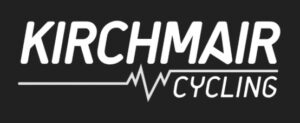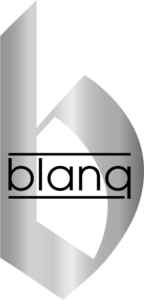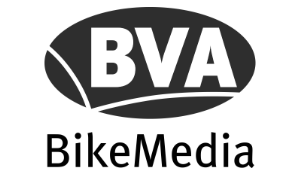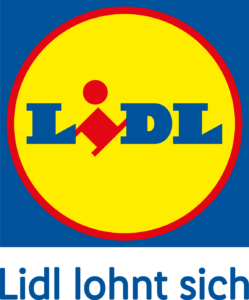Three countries, one cycling festival - and endless touring possibilities: Eifel, Ardennes, High Fens, Mergelland. A portrait of the region around Aachen. From: RennRad 3/2023
Text: Günter Jekubzik
Fotos: Marc Gasch, Petra Vroomen, George Deswíjzen, Günter Jekubzik
We ride slightly uphill, on a former railroad line that became a bike path - on Belgian territory yet in Germany. Actually. This is the "Vennbahnweg", a long strip of land that legally belongs to Belgium. The borders are almost "fluid" here, in the three-country corner. Our tour started at the 1200 year old Aachen Cathedral and the historic City Hall - and led us into the forest. We ride on 3T Exploro gravel bikes. Our trip is a part of the XPDTN3 action, where extraordinary regions - such as San Francisco, the Moab Desert, the south of South Africa - are traveled and driven. Our current travel and tour destinations: the Eifel and the Ardennes. Three countries, three languages and five regions with different mentalities and specialties: The "Euregio Meuse-Rhine" offers extreme variety in a small area.

Lakes & Forests
It is a sunny autumn day. We pass through the almost kitschy little historic village of Kornelimünster and then leave "civilization" behind. We first turn onto a gravel dirt road, then onto a path. This is an ideal gravel region: wide, varied, natural, hilly. The soil is soft, but partially rooted. Driving technique is required in these passages. A lake appears below us, which we later circle: the Wehebachtalsperre. The sun's rays glisten on the water. No one speaks. Only the crackling of the leaves over which our studded tires roll can be heard. We pass Hürtgenwald - and later the huge "Ordensburg Vogelsang" and get a little history lesson. Even Ernest Hemingway once reported the defensive battle between the Wehrmacht and the advancing US Army around the Hürtgenwald. It ranks as one of the most severe battles fought by the U.S. Army in all of World War II.
The Nazi Ordensburg Vogelsang was built by the National Socialists in the Eifel region above the Urft dam on the Erpenscheid mountain above the Urft dam. Between 1936 and 1939, it served as a training center for the next generation of the NSDAP leadership cadre and is now a listed building. Our day tour takes us further. Into the Rur-Eifel, and up to Heimbach, the smallest town and smallest municipality in North Rhine-Westphalia with only about 1100 inhabitants. The village center is dominated by small half-timbered houses, and Hengebach Castle towers above everything. The next day, the next tour. A rainbow hovers above the Rursee, which is in front of us. This is the direction we are heading. As far as Einruhr, the route follows the shore with the ramifications of the reservoir. We touch parts of the National Park Nordeifel. The slopes become longer, the ground becomes more difficult: loose stones, boulders. I have to concentrate on keeping the rear wheel of my gravel bike from spinning. Above: Pause. Dismount, energy bar eating, photo taking. Mount. Departure. We pass the Eifler-Seen-Platte, the Obersee and the Olef-Talsperre.
Limits & Rises
The beech forests we passed through before are increasingly becoming spruce and fir stands. Wherever I look, the color green dominates. And so we also cross the "green border" to Belgium without noticing it. Our next intermediate goal: a singletrack at the Büttgenbacher See, a narrow "slalom course" on soft forest soil. The driving pleasure and the happiness hormone release rate: enormously high. After that, we continue in an orderly manner, at a basic pace, towards our destination for the day: Ligneuville in Belgium. The town is located just south of the famous Spa-Francorchamps race track. From there we went back to Aachen. That ancient city with a great history. And that city where a new bike festival is held: the "3 Rides Festival". In 2022 it was held for the first time. This year it will be held from May 12 to 14. It includes: Bike marathons, testing opportunities, entertainment, culinary - and the option to take gravel tours of the surrounding area. Which is extremely recommendable, because: This environment offers extremely much - nature, tranquility, seclusion, altitude, trails, dirt roads, variety. In the Eifel, the Ardennes or the Mergelland.
The latter takes its name from "marl", the highly calcareous soils of the region. Millions of years of marine life once created, geologically, the soft white stones we see today. In dry conditions, the fine limestone dust provides a fine film on the faces of cyclists. When wet, a thick white slush layer is often found there instead of a film. This region can be experienced and experienced intensively on the gravel bike within the framework of the "Gravel Series Limburg". The event has already been held six times and is part of the Dutch gravel championship series. The start of the course: wide dirt roads. The underground: tiny chalk stones. First it goes to the Dutch-American cemetery in Margraten. The 65-kilometer start tour around 900 meters in altitude is called the "Liberation Ride." It passes through Mesch, a small village that was the first to be liberated during the Second World War, along the "Siegfried Line" and many monuments commemorating the history of the war. Even more impressive are the wineries with their Pinot Gris, Chardonnay and other vines. When the route crosses the border into Wallonia for a short detour into French-speaking Belgium, the trails become narrower and the view opens down into the Meuse Valley.
Hills & Targets
On the other shore, at the gigantic limestone quarry of Hallembaye, we virtually look into the earth's interior of the Cretaceous period. A white wall rises in front of us, still visible from 30 kilometers away. This corner of Belgium is called Fouron or Voeren - whether French or Dutch should be officially spoken here still caused fierce street battles in the 1980s. Just under four hours after we arrive back in Aachen, the starting point. After driving along a route as diverse as regions through which it passes. The three-country corner generally offers extremely much. Among other things: Surprises. For example, the prejudice that the Netherlands is "flat" is refuted here. This was also made clear to me once again - painfully - when I completed the "Dutch Mountain Ride". The data of the route: 138 kilometers, 1800 meters of altitude. The makers of the ride chose the most difficult and spectacular hills in the region and combined them with a challenging course. You can start or end this tour at any point. Insider tip: The speciality "Limburgse vlaai", a pastry with fruit compote made of yeast dough, should definitely be on the break menu.

We also take a break at the "free-floating" viewing platform at Sint Pietersberg. From here you have a magnificent view of Maastricht, the city with the "Burgundian" way of life. In the historic city center we take the first longer break. In the old bakery Bischopsmolen. The owner Frank van Eerd regularly supplied the professional cyclists of the team Lotto-Dstny. During big bike races, like the Amstel Gold Race, his cafe becomes a cyclist and supporter hangout. We find it difficult to get up and climb on - but we have to keep going. Departure. We roll out of the Maas Valley, in the direction of the highest "mountain" in the Netherlands and the round. Its maximum height: 323 meters above sea level. Nevertheless: I feel weaker and weaker. Hill follows hill. It is almost never flat. It a typical route for the Limburg region. A route that also makes up the World Tour race Amstel Gold Race. The next climb: the Wilheminaberg near Landgraaf. The little road up leads over an old coal dump. The site includes a ski hill, a cycling track and, at times, an entire pop festival. It follows: The last climb of the day - the Gulperberg - and an almost flat way back to Maastricht. Over the fine white underground of the marly land. A substrate that leaves traces.
About 3RIDES
From May 12 to 14, the second edition of the 3Rides Festival will take place on the CHIO grounds in Aachen. One of the highlights will be an official UCI qualifying race for the 2023 Gravel World Championship. Thus, the race in the tri-country area will be a part of the UCI Gravel World Series. Gravel racing complements a wide range of sporting challenges such as sprint races, various bike marathons and gravel rides. The innovations in detail: Visitors can take advantage of e-cycling offers. In addition, the family offer will be further expanded. The city of Aachen will be more involved in the festival concept with guided tours. The offer is aimed at recreational cyclists who are interested in getting to know the city of Aachen or prominent representatives of the cycling industry in more detail on guided tours. The core of the festival remains the large expo with a test bike area, flanked by live musical acts and a food market. Cooperation with Belgian and Dutch event organizers and an expanded marketing campaign are intended to attract even more visitors to Aachen from the key growth markets for the bicycle industry. The festival's location in Aachen has a catchment area of over 10 million people within a radius of 150 kilometers. The organizers are BVA Bikemedia GmbH, to which RennRad magazine also belongs, and the event specialists ProStyle. Further information: www.3rides-festival.com





